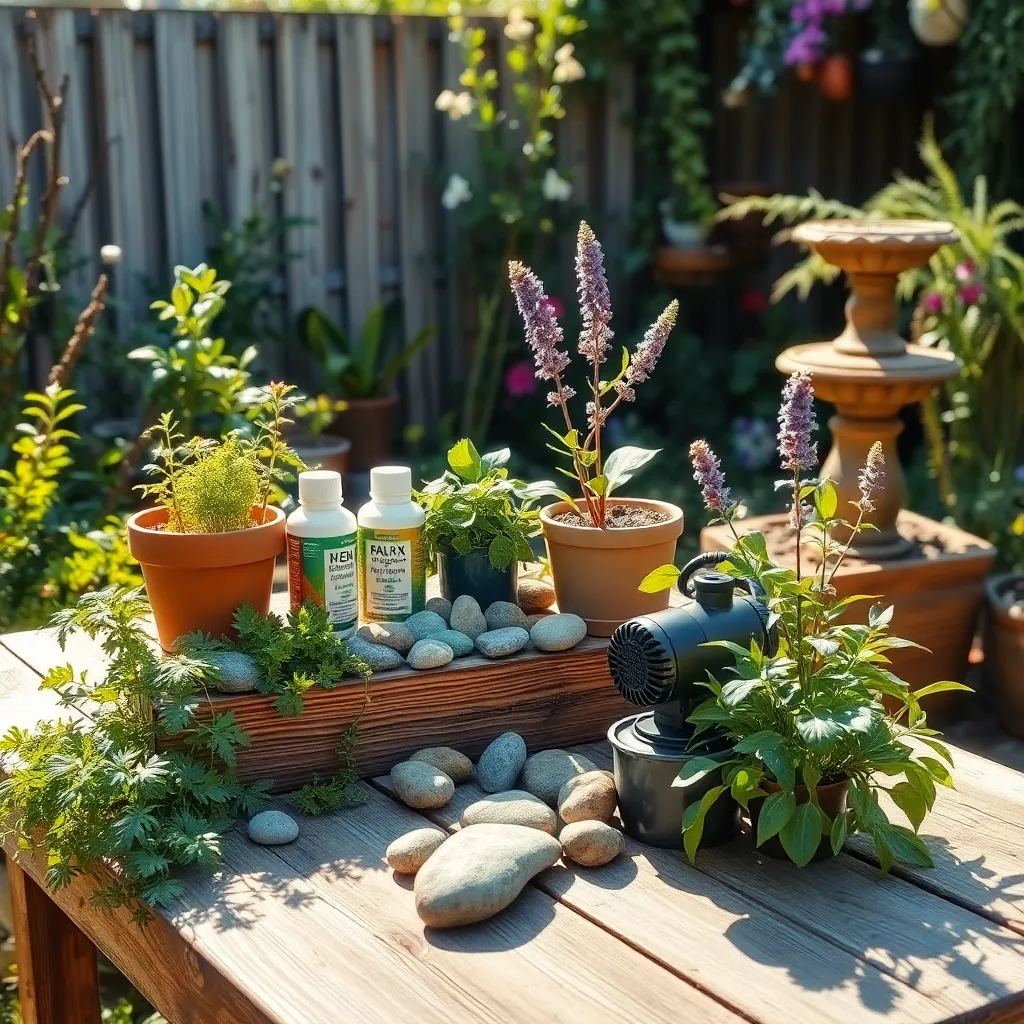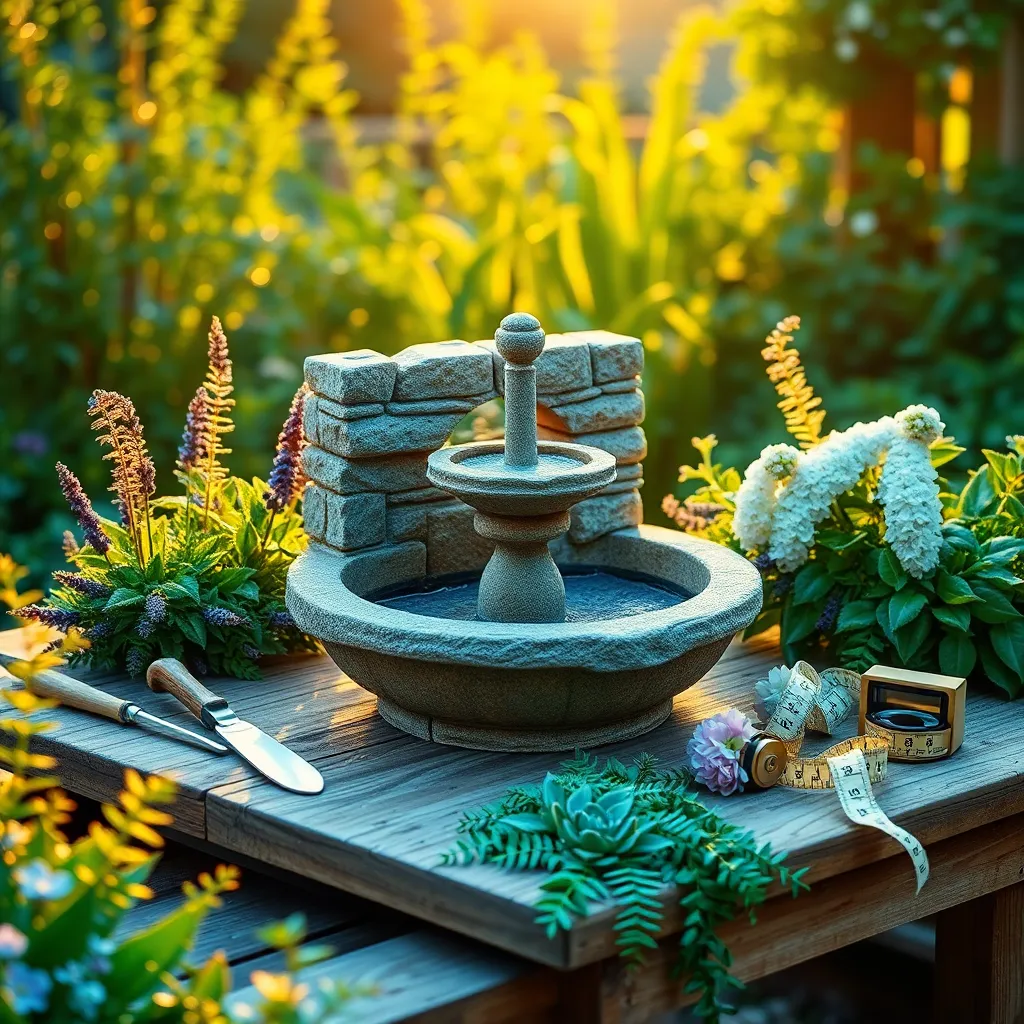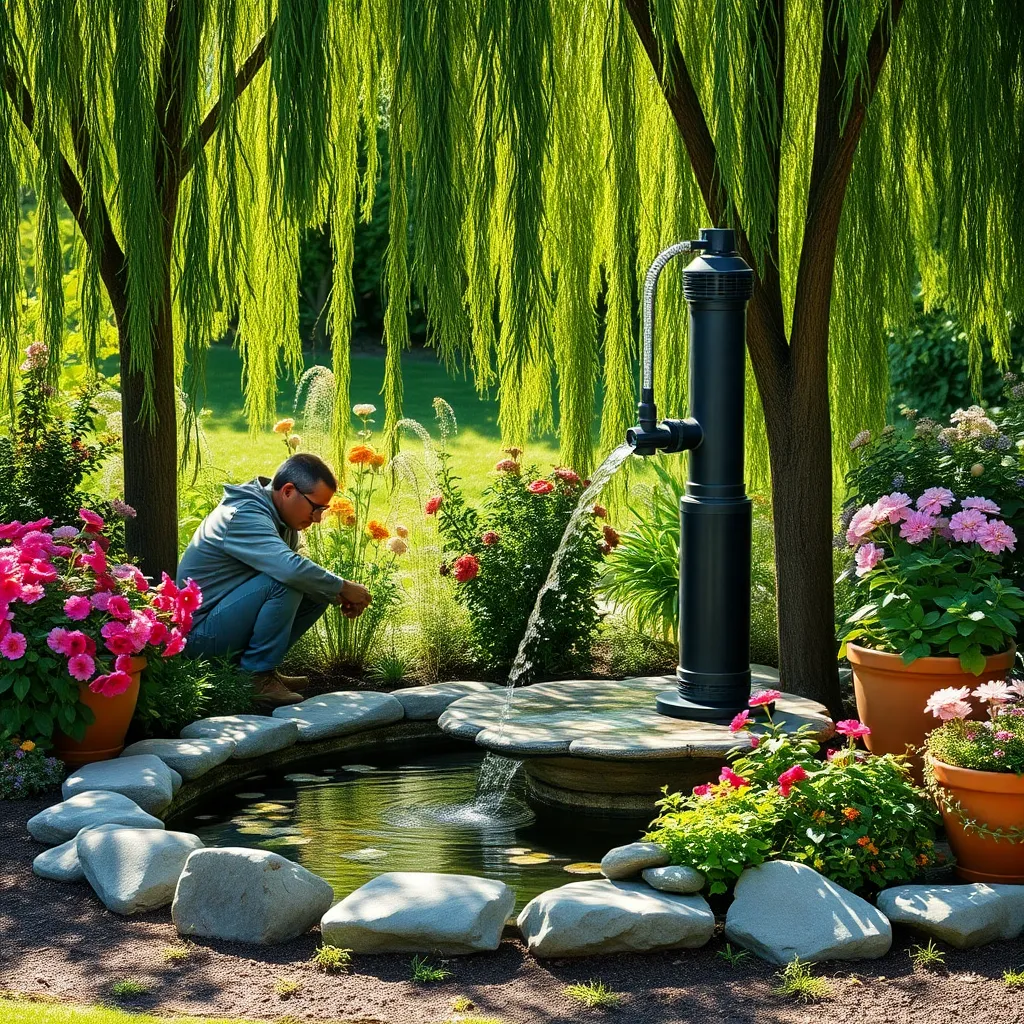Imagine transforming your garden into a serene retreat, where the soft murmur of water creates a sanctuary of peace and beauty. A garden water fountain can be the centerpiece that turns an ordinary outdoor space into an extraordinary haven, inviting you to pause and savor the tranquility it brings. Whether you’re a seasoned gardener looking to add a new dimension to your landscape or a beginner eager to explore the wonders of garden design, crafting your own water fountain is a rewarding project within your reach.
Creating a garden water fountain is not only about aesthetics; it also supports a thriving ecosystem. The gentle sound of flowing water attracts beneficial insects and birds, enhancing the biodiversity of your garden. In this article, you’ll discover step-by-step guidance on choosing the right materials and learning the techniques to construct a fountain that fits seamlessly into your garden’s unique character. From selecting the perfect location to understanding the mechanics of water flow, you’ll gain the insights needed to embark on this creative journey with confidence.
Select an Ideal Fountain Location

When selecting an ideal location for your garden water fountain, consider the availability of sunlight in the area. Most fountains thrive with some sunlight, but placing them in partial shade can help prevent excessive algae growth.
It’s crucial to ensure the ground is level where you plan to install the fountain to prevent water spillage and uneven wear. If the ground isn’t naturally level, you can use a layer of compacted gravel or sand to create a stable base.
For a harmonious garden design, think about the fountain’s proximity to plants that benefit from increased humidity. Fern varieties and hostas are excellent choices to plant nearby, as they thrive in moist environments.
Keep in mind the accessibility of a water source for easy maintenance and refilling. Use a hose with a longer reach or consider installing a nearby spigot to make this task more manageable.
Gather Necessary Materials and Tools

Before starting your garden water fountain project, gather all necessary materials and tools to ensure a smooth process. Begin with a water pump, which is the heart of your fountain; choose one based on the fountain’s height and water volume.
You’ll also need a water basin or reservoir, which will hold the water as it circulates. Opt for a basin that’s durable and appropriate in size for the location and scale of your fountain.
Ensure you have the right tubing to connect the pump to the fountain feature, as well as a power source nearby to plug in the pump. Consider using a GFCI outlet for added safety, especially in outdoor settings.
Gather decorative materials like stones or pebbles to create a natural look and conceal the basin. These additions not only enhance aesthetics but also help with water retention and sound.
Assemble the Fountain Structure

Start by choosing a location for your fountain that is both visually appealing and practical. Ensure the spot has access to a power source for the pump, and is on level ground to prevent water imbalance.
Next, lay the foundation for your fountain using a sturdy, waterproof basin. Concrete and fiberglass basins are excellent choices for their durability and water retention capabilities.
Once the basin is in place, assemble the pump system according to the manufacturer’s instructions. It’s crucial to use a pump that matches the size and flow rate required for your fountain structure, ensuring efficient water circulation.
Secure the pump at the bottom of the basin with suction cups or a mounting bracket to prevent movement. Regularly check the pump for obstructions or debris to maintain a steady water flow and prolong its lifespan.
Install the Water Pump System

Once you have assembled the fountain structure, the next step is to install the water pump system. Choose a submersible pump that is appropriately sized for your fountain, ensuring it has enough power to circulate water effectively and create the desired flow.
Before you start, make sure the pump is compatible with the voltage and electrical setup you have in your garden. It’s crucial to use a pump with a built-in filter to prevent debris from clogging the system and to keep the water clear.
First, place the pump at the bottom of the fountain’s basin, ensuring it is fully submerged to operate efficiently. Connect the tubing to the pump’s outlet, making sure it is secure and free from kinks that could impede water flow.
Next, run the tubing up through the fountain structure, hiding it within any decorative elements if possible. This not only maintains the aesthetic appeal of your fountain but also prevents any accidental damage to the tubing during maintenance or cleaning.
Finally, plug the pump into a GFCI outlet for safety, and test the system by filling the basin with water and turning it on. Adjust the pump’s flow rate according to your preference, ensuring the water cascades smoothly without splashing excessively outside the basin.
Test and Adjust Water Flow

Once your water pump system is installed, it’s crucial to test the water flow before finalizing your setup. Begin by turning on the pump and observing the flow of water; it should be smooth and consistent without any sputtering or interruptions.
Adjust the pump settings to ensure optimal flow. For a gentle trickle, you may need to reduce the pump’s power, whereas a more vigorous fountain might require a higher setting.
Consider the placement of rocks or other decorative elements around the fountain to naturally guide the water. This can help enhance the aesthetic appeal of your fountain while also ensuring that water falls precisely where you want it.
If you notice uneven water distribution or splashing, reposition the pump or adjust the angle of the water outlet. This might involve shifting the pump slightly or adding small stones around the base to redirect the water flow effectively.
For advanced users, integrating a timer with your pump system can automate the fountain’s operation. Set it to run during peak hours, such as early morning or late afternoon, when it can be most appreciated.
Regularly check the water level in the fountain basin to prevent the pump from running dry, which can cause damage. Top up the water as needed, especially during hot weather when evaporation rates are higher.
Conclusion: Growing Success with These Plants
As we journeyed through the creation of a garden water fountain, we uncovered five key relationship concepts: the importance of a solid foundation, the need for creativity and flexibility, nurturing growth through consistent care, the power of communication, and the beauty of shared achievements. These principles not only apply to building a tranquil garden feature but also resonate deeply within our personal relationships.
Now, let’s take an actionable step forward: choose one of these concepts and initiate a conversation with your partner or loved one about how you can implement it in your relationship. Whether it’s setting a stronger foundation through shared goals or fostering open communication, this step is pivotal in nurturing your bond.
As you embark on this journey, remember to bookmark this article for future reference. Having these insights at your fingertips will serve as a valuable guide in times of need.
Looking ahead, envision the flourishing success of your relationships, much like a well-tended fountain. With dedication and care, your relationships can become a source of endless joy and strength. Embrace the opportunity to cultivate connections that will stand the test of time, and watch as they bloom with life and love.
